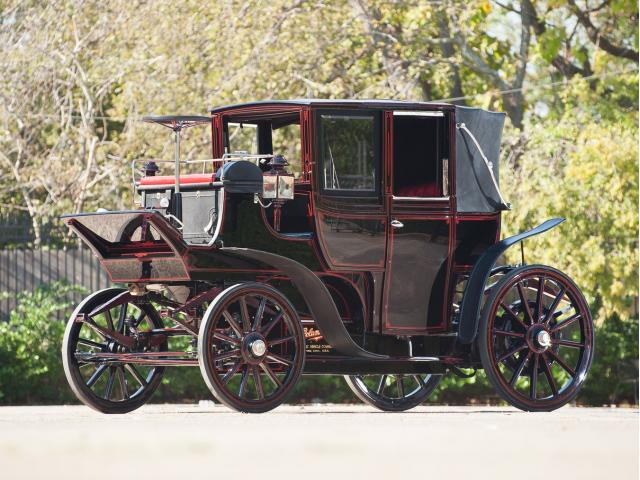1899 Columbia Electric Landaulet
- Brand: Columbia
1899 Columbia Electric Landaulet
In a day and age when there is a huge push to reduce emissions and to clean the environment many have images of going back to the days of the horse and buggy. But around 1899, Columbia would give the world its impressions of the future and of what an electric, zero emissions, car would look like.
Back before the days of fancy advertising and branding, Columbia would simply call it the 'Columbia Electric Landaulet'. The Columbia design would result from the merger of Pope Manufacturing Company and Electric Vehicle Company in 1899. In its day, Columbia Automobile Company was a leader in automobile manufacturing. One of its examples would be the Electric Landaulet.
Because of cars like the Electric Landaulet, Columbia would become a rather large manufacturer. It would develop and build a number of electrically-powered horseless carriages using twin electric motors. Models, like the Columbia Hansom cabs could reach a speed of 13 mph.
Columbia would continue to design a number of different chassis utilizing electric motors for power. The company's basic 'Runabout' would feature steering via a tiller and a traditional horseless carriage look. Exide Batteries was, at the time, associated with the Electric Vehicle Company and would need to produce twenty batteries to be fitted to the Runabout for power. These electric vehicle would gain a good deal of popularity in the cities as the smoothness of the electric engine caused the car to seem superior than any other gasoline-powered design.
Soon; however, Columbia would begin to develop its cars using gasoline engines for power. The practicality of the gasoline engines over the short-comings of the electric motor was beginning to weigh into the equation.
At the time of Columbia's transition to gasoline engines, and electric, it was one of the largest manufacturers in the country. However, the company would begin to wane over the years. This gradually disappearance would be further aided by a lost battle with Henry Ford over a patent. Finally, in 1910, Columbia Motor Car Company would be acquired by United States Motor Company.
The once numerous Columbias have become quite rare. Its very first examples of electric-powered horseless carriages are even more of a rare find. However, one such example of the Electric Landaulet would become available for sale at RM Auctions event in Monterey, California in August of this year.
Chassis number 348 is somewhat shrouded in mystery and mere oral history. Initially it was believed the landaulet was sent to Stevens Institute of Technology for testing and would even be used in transit service in New York City. The story further relates that the landaulet had been purchased by a wealthy plantation owner from Charleston, South Carolina and had been transported there by train. This story is questionable given the simple fact of infrastructure and that not all cities had been wired for electricity.
Nonetheless, the Electric Landaulet would be discovered in a carriage house in Charleston in 1976. It would be sent to Bruce Amster's Hyannis Restorations in Massachusetts were it would undergo extensive restoration. When the restoration was done, an important piece of engineering from around the turn of the 20th century would be saved and made available to marvel at.
Finished in black with red moldings and piping, this extraordinary horseless carriage is believed to be the only survivor of the model and This grand and imposing piece from James Cousens' Cedar Crossing Collection is certainly an important piece in the evolution of the automobile and electric-car technology.
Descriptions & pictures by cumbriancarnut & hiveminer & other
| Specification | |
| Production Start | 1899 |
| Country of origin | USA |

































